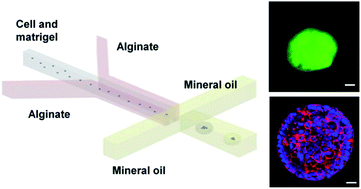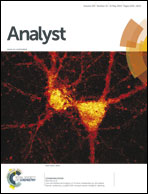Mixed hydrogel bead-based tumor spheroid formation and anticancer drug testing
Abstract
Three-dimensional multicellular tumor spheroids have become critical for anticancer study since they may provide a better model than conventional monolayer cultures of cancer cells. Various methods for tumor spheroid formation have been explored. However, only one kind of hydrogel was used in these methods, which has an influence on the size and morphology of the obtained tumor spheroids. Herein, we present a microfluidic droplet-based method for the formation of multicellular tumor spheroids using alginate and matrigel mixed hydrogel beads. By on-chip changing the flow rate of the two hydrogel solutions, mixed hydrogel beads with different volume ratios between alginate and matrigel are obtained. Meanwhile, human cervical carcinoma (HeLa) cells are encapsulated in the mixed hydrogel beads. Acridine orange and propidium iodide double-staining assay shows that the viability of cells encapsulated in the mixed hydrogel beads was more than 90%. After 4 day culture, the multicellular tumor spheroids were successfully formed with spherical shape and uniform size distribution compared with spheroids formed in pure alginate beads. Cytoskeletal analysis by TRITC-phalloidin staining show that HeLa cells in the mixed hydrogel beads closely link to each other. The dose-dependent response assay of HeLa cell spheroids to vincristine show that multicellular spheroids have more powerful resistance to vincristine compared to conventional monolayer culture cells. Taken together, this novel technology may be of importance to facilitate in vitro culture of tumor spheroids for their ever-increasing utilization in modern cell-based medicine.


 Please wait while we load your content...
Please wait while we load your content...